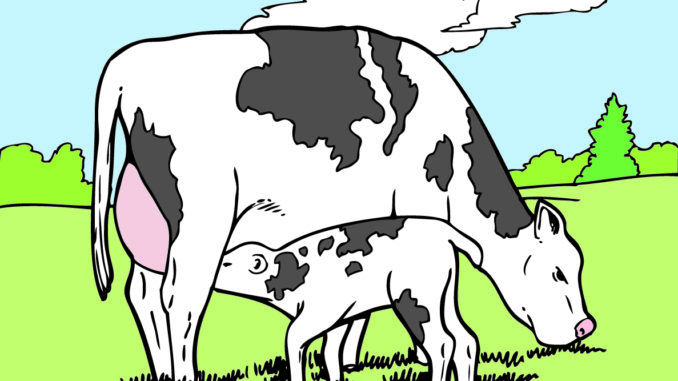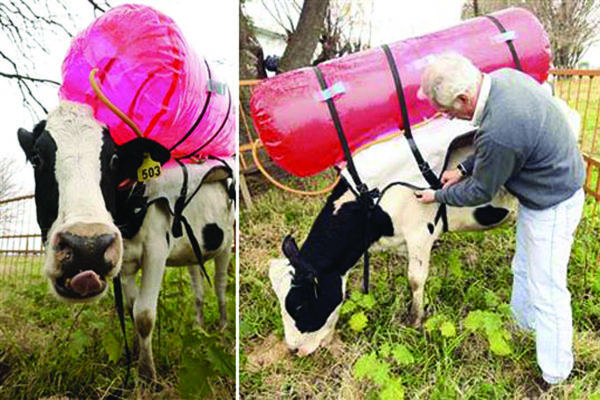
By R. Gary Raham
A biologist-artist’s ruminations about our roles in a science-inspired world
In January, in my BioBites column titled “An ode to slime,” I rambled enthusiastically about algae—the often microscopic photosynthesizing creatures that helped form the living world we know and may help us overcome our often failed stewardship of planet Earth. The other day I ran across a totally unexpected use for algae: a feed supplement for cattle that makes them belch less often, and thus significantly reduce the amount of methane they release into the air. Methane is a carbon compound 86 times more potent than carbon dioxide in warming the atmosphere.
Cow burps? Really? How important can they be in a changing climate? Roughly 1 billion head of cattle roam the planet these days (according to statista.com). These billion hamburgers-on-the-hoof, and milk-in-the-mammary-glands bovines emit close to 90 U.S. tons of methane into the air every year (according to muchadoaboutclimate.com). That total amounts to 10-15% of methane emissions worldwide. (Transportation and energy production top the methane production list.) Still, our friendly cud-chewing neighbors—with the help of their symbiotic gut bacteria—account for a sizeable quantity of methane production.
It turns out that a University of California researcher named Breanna Rogue studied the problem and made a startling discovery: a little bit of algae in the cow’s feed made a big difference. Feed containing 2% algae reduced methane emissions by a whopping 99%. Half that amount still reduced methane emissions by 67%. Science writer Jennifer Walter discusses some of the details in a recent article for Discover magazine (https://www.discovermagazine.com/environment/cows-burp-out-tons-of-methane-feeding-them-seaweed-could-help).
Rogue’s work builds on research conducted in Australia since 2016. Scientists are still unsure about whether or not algae in cattle feed may affect the meat and milk they produce in some way. Consumers wouldn’t want milk with a fishy aftertaste, after all. Other matters of practical concern include figuring out the shelf life of feed with the additive and finding ways to scale up the production of the alga that seems to work well—a beastie called Asparagopsis taxiformis. Scientists also don’t yet know the mechanism by which the algae work their magic.
Other ways to fix the cow methane problem seem a bit tougher than the algae additive solution. Since each cow emits about 400 liters (420 quarts) of methane per day—enough to power a small frig, for example—some scientists have attempted to capture the methane in a backpack. Scaling that project for a billion animals would seem daunting—not to mention the fire or terrorist hazard of cows wandering around with balloons of a flammable gas on their backs.

Algae do seem like the way to go. And, who knows? Maybe algae in human diets in the future will make our own methane emissions more climate-friendly—although, most likely, no less aromatic.
Support Northern Colorado Journalism
Show your support for North Forty News by helping us produce more content. It's a kind and simple gesture that will help us continue to bring more content to you.
BONUS - Donors get a link in their receipt to sign up for our once-per-week instant text messaging alert. Get your e-copy of North Forty News the moment it is released!
Click to Donate
